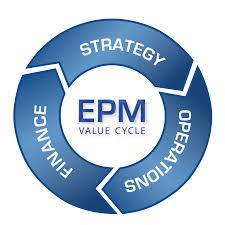The ability to drill through from BPC to more detailed information is a high value exercise for a relatively low investment - yet it continues to be one of BPC’s most overlooked features.
The typical use cases are as follows:
- Lower level connection with details
- Exact, accurate actuals for run rates, deconstructing numbersDetails necessary to calculate drivers that drive the accurate plan
- Ability to link to transactional systems at the lowest level of detail for drill through
- Time definition is the frequent axis for alignment
- Automate time to explain variances & identify anomalies
- Understand exactly what transaction drives variance (if applicable)
- For close, audits, and other reconciliation exercises, spot suspect numbers
- Convenience builds user adoption Adds functionality like drill through to details, even possibly images
- “One stop shopping” user experience
- No need to switch tools wholesale as data gets lower in details
Topics:
Data,
BPC (Business Planning & Consolidation),
BPC,
Functional,
reporting
The landscape of an EPM project is literally changing right before our eyes. In fact, we posted a blog on this topic not long ago and realized that there were several updates that needed to be made. Not because the post was incorrect but because the practice in the field had changed in a few short years.
Topics:
Thought Leadership,
Project Management,
Implementation
In part one of this post we explored some of the areas where SAP Business Planning and Consolidation has added significant value to the Consolidation process through the use of Business Process Flows. The Business Process Flow not only aided in guiding a user through the steps in a process but served as a mechanism to allow once time consuming centralized tasks to be pushed upstream and distributed across the user base. This post will dive into some key model considerations that need to be addressed in order to achieve this value.
Topics:
Training,
Value,
BPC (Business Planning & Consolidation)
If you have recently evaluated replacing your consolidation system, you were undoubtedly faced with justifying the value of the solution. While a new solution will have a plenty of new features and performance benefits, at the end of the day, the accounting rules that need to be followed and the results being generated are the same. Today, we are seeing more consolidation system evaluations based not only on adding value, but more importantly their ability to integrate with and add value to the overall enterprise performance management (EPM) processes. Implementing SAP Business Planning and Consolidation (BPC) is one way of accomplishing that, particularly through the use of business process flows (BPFs).
Topics:
Process Improvement,
Enterprise Performance Management (EPM),
Consolidation,
Value,
Data,
BPC (Business Planning & Consolidation)














